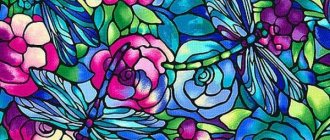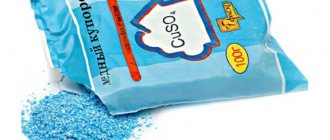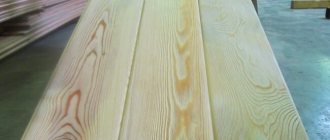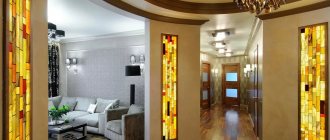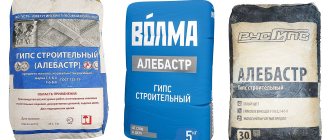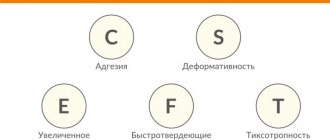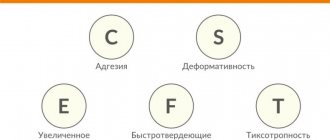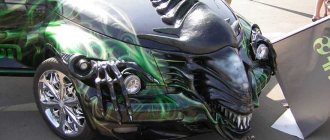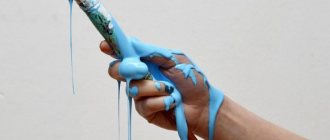Neon paint is an excellent material for creating exceptional decorative effects. With its help, an ordinary room can be turned into a beautiful and truly fabulous place. The luminescent pigment contained in the material allows you to give an original look to any object or type of surface. Among the advantages, it is also worth noting that phosphor is easy and quick to make at home.
How to make luminous paint, where to get the necessary components, as well as the features of use will be discussed in this article. We will also tell you how to make a phosphor yourself.
Characteristics and properties of neon paint
Luminescence or the ability to glow in the dark is a property that dyes acquire due to the addition of a phosphor (neon) to the original composition. This substance can accumulate solar energy during the day. After turning off the light, including artificial light, the phosphor coating glows for 7-8 hours.
There is an important difference between luminescent and fluorescent dyes. The former glow in the dark thanks to accumulated solar energy, the latter - ultraviolet radiation.
The composition of such dyes includes the following types of phosphor:
- Organic. This phosphor is based on naphtholic acid. This substance, accumulating solar energy, glows due to neon radiation. Because of this feature, organic phosphor coatings periodically emit momentary flashes.
- Inorganic. This phosphor consists of crystal phosphor components that emit uniform and constant light.
In addition to phosphor, acrylic paints are used in the manufacture of such materials, which act as a binder.
This component has the following characteristics:
- versatility (suitable for finishing various materials);
- high plasticity;
- resistance to abrasion and other external influences;
- high speed of drying (polymerization).
Distilled water or special mixtures are used as a solvent in neon dyes.
Types of luminescent paint
Coatings differ in the degree of transparency of the formed film. Of course, transparency and color depend on the chemical composition of the paintwork material; the phosphor can be combined with any composition. It is worth talking in detail about the features of various self-luminous paints.
Coatings differ in the degree of transparency of the formed film.
Colorless (or translucent)
When luminous particles are added to a colorless transparent varnish mixture, it acquires a whitish tint and turns translucent. Phosphor colorless paints are produced on the basis of:
- Acrylic varnish, polymerized in a thin layer;
- Alkyd mixtures created with organic solvents;
- Polyurethane composition containing elastic components;
- Epoxy resin, pigments are introduced into the hardener.
The standard proportion of ready-made luminous paints is one to three. Important! The type of base does not affect the intensity of light emission; the main thing is that the varnish creates a transparent film when drying.
The standard proportion of ready-made luminous paints is one to three.
Colored
Some colored paints, in addition to tint dye, contain a pigment that is visible only at night. At the same time, luminescent particles do not lose their ability to accumulate energy and emit it in the dark.
By the way, radiation also occurs during the daytime, but is invisible in the light range of the spectrum and is captured only by devices.
The ability of colored paints is actively used on the theater stage. Clothes of road repair workers in standard colors, with the addition of color-emitting pigments, become clearly visible at dusk and at night.
The ability of colored paints is actively used on the theater stage.
Scope of application
Paints that glow in the dark can be used for:
- finishing of facades, entertainment facilities or structures in park areas;
- painting warning signs or signs;
- drawing on the body (body art);
- product labeling;
- road markings;
- design of railway fencing.
Expert opinion
Zakharova Irina Yurievna
Cleaning professional with 15 years of experience. Our best expert.
Ask a Question
Dyes that contain phosphor are also used in printing - for printing business cards, greeting cards and more. This pigment is used to decorate bicycles and other vehicles. In addition, this substance is added to tissues.
Features of fluorescent paint
The second name for fluorescent paint is ultraviolet or invisible. Its difference from luminescent is that it does not begin to glow on its own with the onset of darkness; to see it, exposure to ultraviolet radiation is necessary. In artificial and daylight it looks like ordinary paint. It contains a transparent base and a fluorescent pigment - a powdered dye created from thermoplastic resins. These pigments are safe and non-toxic. Green, yellow, pink and red ultraviolet paints are considered the most effective, as they show up well with a weak ultraviolet source.
The range of application of fluorescent paint is as wide as that of luminescent paint - metal, glass, wood, ceramics, plastic and polyvinyl chloride, textiles, flowers. Also used for outdoor work - landscape and exterior design.
Fluorescent paint on the facade
Fluorescent paint is completely safe for people and animals, and can be used in residential areas. There is no need to worry about the radioactivity, toxicity or flammability of glow paint. It should be purchased from manufacturers that have the appropriate safety certificate.
For your own safety, you should carefully read the safety data sheet and product certificate of the manufacturer of the luminous paint before purchasing it. You should beware of Chinese counterfeits due to their excessive toxicity caused by the addition of phosphorus.
Thus, lovers of everything new and creative should decide to use luminous paint and create a bright, colorful, enchanting and fairy-tale world around themselves with their own hands.
Advantages and disadvantages of the material
Among the advantages of such finishing materials are the following:
- long service life (they remain on building facades for 30 years);
- frost resistance;
- versatility;
- chemical neutrality (do not provoke allergic reactions and other side effects);
- do not collapse when exposed to temperature;
- tolerate direct contact with sunlight.
See also
Features and rating of the best brands of paints for metal stoves, how to apply
There are no disadvantages to luminous dyes. It should be taken into account that such compositions are used in highly specialized areas. For example, painting bedrooms in materials that glow in the dark is prohibited.
How to make regular paint glow
There are several ways to achieve the luminescent effect at home. You can, for example, purchase self-luminous paint, in which the phosphor components are already dissolved. This paint is often called neon, although there is no neon there. The glow is created by the luminescent pigment contained in ordinary acrylic paint.
The effect of such a pigment is as follows. During the day, such paint should be exposed to artificial and natural light (this is mandatory), which is accumulated by acrylic enamel, and then emitted into the external space at nightfall. The radiation process usually lasts from 8 to 12 hours - a period sufficient for the room to be filled with external light again. At the same time, the surface layer of paint again stores energy, which it will release in the evening.
Since the process is cyclical, no destruction of the phosphor components occurs, and the emissivity of the paint can be maintained for a long period of time. However, such paints are quite expensive, and in addition, they have a very limited palette of shades. Therefore, it may be impossible to make, for example, a multi-colored glow on the walls in a room that imitates neon.
At home, it is much easier to make such neon paint with your own hands. To do this, you need to purchase a set of luminescent pigments. They have universal application, and therefore have the following positive features:
- High frost resistance (which is more important when painting cars, but it is quite acceptable if using such pigments to paint part of the wall of a dark hallway or utility corridor, basement, attic).
- They are chemically neutral and therefore do not cause dermatitis or allergic reactions. This is especially valuable if the phosphor pigment is supposed to be added to illuminate part of the wall of the children's room.
- They are not destroyed under the influence of high temperatures (most compositions are stable up to +30°C). But if direct sunlight hits the wall, it is better to cover the wall painted with acrylic paint with phosphor additives, curtains or a thick curtain.
- Suitable for both indoor and outdoor use.
- The warranty period for phosphor pigments is 25-30 years.
Self-luminous additives include chemical compounds that dissolve well not only in acrylic, but also in other types of household varnishes (alkyd or polyurethane). The varnish must be transparent, otherwise the final paint color may differ from the desired one.
In any case, before creating self-luminous paint at home with your own hands, you should first check the final effect on a small and invisible part of the wall, where external light will constantly fall.
Varieties and recommendations for selection
Glow in the dark paints are divided into 3 types:
- Luminescent. The most popular type of neon paint based on phosphor. This composition is characterized by increased resistance to external influences and does not harm humans. Therefore, luminescent paints are in great demand.
- Fluorescent. The basis of this dye is acrylic varnish, which also does not harm the body. But fluorescent materials accumulate ultraviolet light. That is, in order for such a coating to glow, a special lamp must be installed in the room. Fluorescent paints are available in a wide range of shades.
- Phosphorescent. This dye is rarely used, since the material is based on phosphorus, a substance dangerous to humans. More often, phosphorescent compounds are used when finishing car body parts.
Neon paints are also divided into the following types:
- Colorless (translucent). These materials, which are based on varnish, are used when painting surfaces with an already applied pattern.
- Colored. When making such neon paints, a pigment is added to the initial mixture, which gives the composition the appropriate shade.
In addition, these materials are divided according to the type of base component:
- Acrylic. These materials dry quickly and are used for painting various surfaces. In particular, acrylic neon paints can be used in body art.
- Polyurethane-mineral. They are mainly used for painting plastic.
- Heat resistant. An expensive type of paint that is used for finishing surfaces heated to 500 degrees.
- Water resistant. After drying, the paints create a moisture-proof film, which is why these compositions are more often used when decorating bathrooms and other similar rooms.
The choice of neon paints is determined by the area of application of the material. Acrylic compositions are considered optimal. Such materials can be used both to decorate the facades of buildings and to decorate interior spaces.
In addition, there are luminescent paints on the market that come in spray cans. Such aerosols are used to treat small surfaces. One can is enough to paint two square meters.
Glow sprays, like acrylics, are suitable for finishing a variety of materials, including drywall, wood and concrete. Such compositions are often used to decorate structures located on the street.
See also
Types of primers for wet rooms and rating of the best brands, how to apply
Let's talk about choosing an emissive coating
Of course, everything directly depends on the expected result. Let's say neon paint can be used for a painting, a wall panel, or for a massive base area.
Depending on the purpose of use, this type of fluorescent color should be taken.
Ultraviolet light looks very unusual on the facade of a building. The pigments themselves are not emitted.
To make the coating glow with neon, you need to direct a high-power ultraviolet light source or an appropriate spotlight to the outside of the house.
True, this is a very expensive pleasure and difficult to implement.
The luminescent coating can independently emit light - you just need to direct the light stream for 20-30 minutes. In this way, energy is accumulated with the help of reflective material and then reflected into the environment. First, you need to figure out the tone of the neon so that it does not bother your eyes and fits well into the interior of the room.
Colors with neon have a stable glow when constantly exposed to a light source.
It is more reasonable to use this type of coloring material for darkened areas of the hallway, while attaching a reflector or mirror to the painted area.
The principle of using luminous paint
When painting surfaces using neon compounds, you must adhere to the following rules:
- Before application, the surface is leveled, cleaned of dirt and dried;
- neon paint is thoroughly mixed (there should be no sediment);
- the composition is applied in at least 2 layers;
- You can apply the second layer 30 minutes after the first.
It is not recommended to apply neon paints to black surfaces. This color also absorbs solar energy, which can negatively affect the quality of the glow of the main coating. Therefore, if the surface cannot be repainted, a primer should be applied over the base finish before work begins.
It is recommended to paint in a shaded area. This will allow you to control the accuracy of the drawing.
What are the advantages of neon lamps?
• Atmospheric. Neon lighting creates a unique “soft” glow that seems to dissolve into the interior, in contrast to the “rough and harsh” incandescent lamps or the “sharp” points of LED strips; • Long service life. • Illumination uniformity. • Quiet – no noise, no hum, no annoying crackling. It is especially valuable for creating home comfort and a calm atmosphere for the desired relaxation. • Low operating temperature. From all points of view, this is a positive property: from the point of view of fire protection, this allows you to place a neon lamp anywhere without fear of fire (its operating temperature is no more than 40 degrees). From an engineer’s point of view, this is evidence of high efficiency, because in incandescent lamps the lion’s share of energy is spent on heating the coil, and not on creating a luminous flux! • The ability to create designer light compositions and drawings of virtually unlimited length and complexity.
Drying time and durability of the coating
The drying time of neon paint depends on the air temperature and the base component with which the phosphor or other similar substance is mixed. On average, this process takes up to 3-4 days. In this case, the paint begins to gain strength 30 minutes after application. Therefore, work with such compositions should be carried out quickly.
The durability of the coating is also determined depending on the type of the main component. Heat-resistant dyes that can withstand significant temperature fluctuations are considered the most durable. Acrylic and polyurethane materials withstand mechanical stress well. And moisture-resistant coatings retain their original characteristics with constant contact with water.
Where do they get neon?
The first neon was made in 1910 by Georges Claude, but for his invention he used the work of Maurice Travers and William Ramsay, English chemists who obtained neon by eliminating it from the air as a by-product. In atmospheric air, the maximum concentration of Ne reaches 0.00182%. This is very small on a planetary scale, but enough for its production in industrial quantities.
The method for producing neon is to liquefy all the heavy components of air, resulting in the formation of a residual non-liquefied component - a helium-neon mixture. Three methods are used to separate helium and neon:
- adsorption of neon by cooled activated carbon;
- freezing with liquid hydrogen;
- double rectification in the condenser-evaporator;
- cold rectification of compressed mixture.
It is the latest technology that makes it possible to obtain gas of 99.9% purity on an industrial scale.
Video: Neon is the most INERT gas on EARTH
Working method
Application Tips
As we noted above, these paints are quite easy to apply with your own hands.
When finishing, you just need to follow simple recommendations:
- Painting must be done at a positive room temperature (at least +50 C).
- The composition should be applied to a dry and clean substrate , since otherwise it is impossible to guarantee high-quality adhesion.
Note! For the best fixation of paint on the surface, it is worth treating it with a penetrating primer made from acrylic copolymers.
- In order for the light effect to be most pronounced, light surfaces need to be finished . When painting a dark area under a layer of neon material, apply a light primer made of acrylic pigment.
It's easier to work in the dark
- The work should be performed in a darkened room with ultraviolet lighting turned on. This technique will allow you to immediately monitor the result of the work and quickly make adjustments.
- To make the outline of the drawing clearer, it needs to be limited by stripes of masking tape . Then you won’t have to waste energy on eliminating drips and incorrect strokes.
The composition can be applied either with a brush or with a spray:
- Shake the container with paint, evenly distributing the pigment in the binder.
- If you use a spray bottle, then filter the composition through a sieve and then dilute it by about 10% - this will ensure the optimal consistency.
Advice! Experts recommend using a nozzle with a diameter of 1.4 - 1.6 mm. The use of nozzles of a different size leads to a deterioration in the quality of the coating.
- To decorate most surfaces, a single layer treatment is sufficient. On the one hand, this way we create the necessary decorative effect, and on the other hand, we save quite expensive paint.
- The treated base must be dried in the same way as when applying acrylic: without drafts, with good ventilation and a temperature from +5 to +300 C.
Result of work
After the paint has dried, we adjust the lighting. As a rule, it is placed in such a way as to maximize all the effects of the coating.

